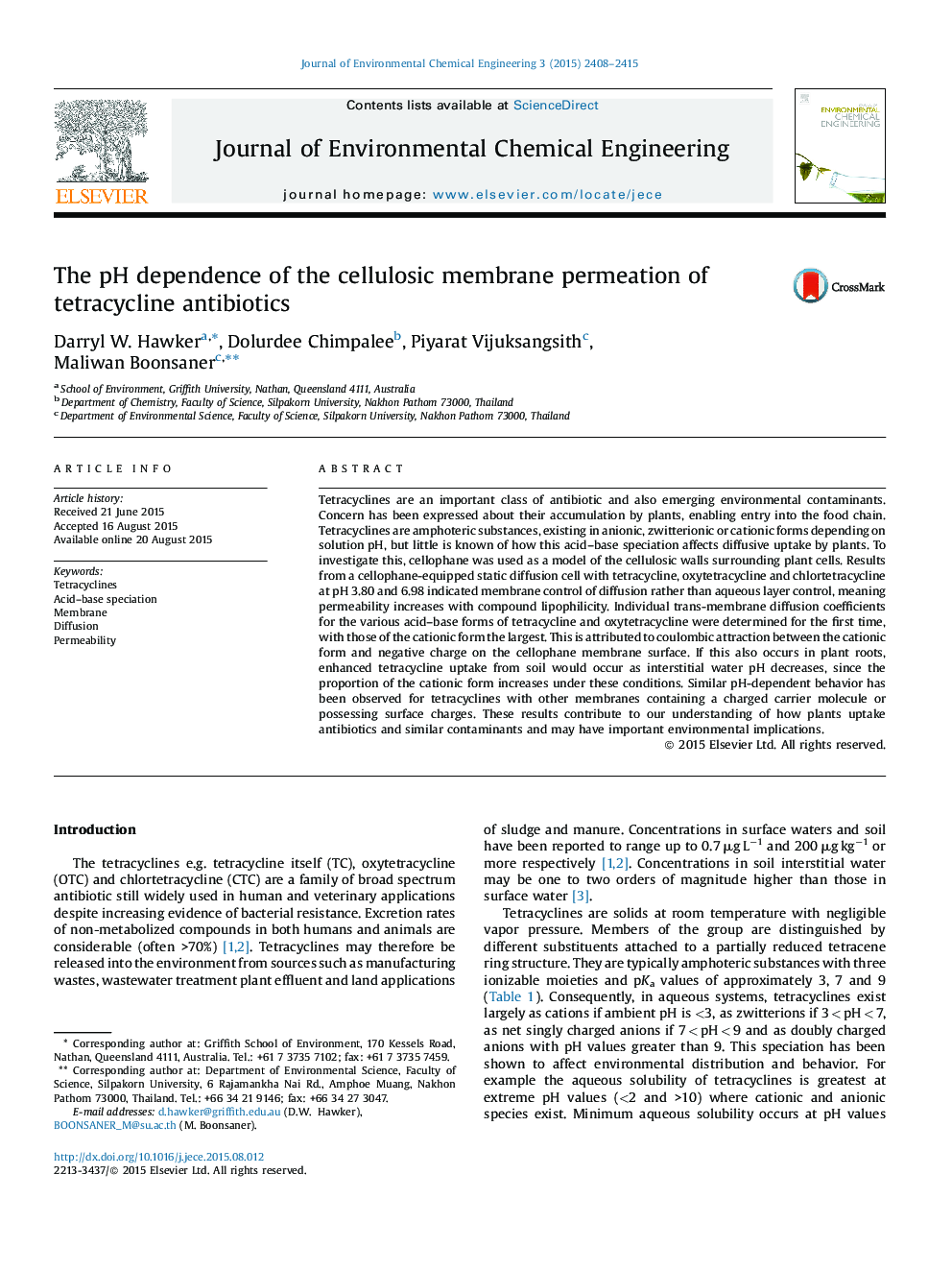| Article ID | Journal | Published Year | Pages | File Type |
|---|---|---|---|---|
| 222044 | Journal of Environmental Chemical Engineering | 2015 | 8 Pages |
•Cellophane was used as a model of the cellulosic walls surrounding plant cells.•Cellophane permeability of tetracyclines was measured at various pH values.•Diffusion coefficients of cationic form larger than zwitterionic and anionic forms.•Behavior attributed to anionic surface charge of cellophane.
Tetracyclines are an important class of antibiotic and also emerging environmental contaminants. Concern has been expressed about their accumulation by plants, enabling entry into the food chain. Tetracyclines are amphoteric substances, existing in anionic, zwitterionic or cationic forms depending on solution pH, but little is known of how this acid–base speciation affects diffusive uptake by plants. To investigate this, cellophane was used as a model of the cellulosic walls surrounding plant cells. Results from a cellophane-equipped static diffusion cell with tetracycline, oxytetracycline and chlortetracycline at pH 3.80 and 6.98 indicated membrane control of diffusion rather than aqueous layer control, meaning permeability increases with compound lipophilicity. Individual trans-membrane diffusion coefficients for the various acid–base forms of tetracycline and oxytetracycline were determined for the first time, with those of the cationic form the largest. This is attributed to coulombic attraction between the cationic form and negative charge on the cellophane membrane surface. If this also occurs in plant roots, enhanced tetracycline uptake from soil would occur as interstitial water pH decreases, since the proportion of the cationic form increases under these conditions. Similar pH-dependent behavior has been observed for tetracyclines with other membranes containing a charged carrier molecule or possessing surface charges. These results contribute to our understanding of how plants uptake antibiotics and similar contaminants and may have important environmental implications.
Graphical abstractFigure optionsDownload full-size imageDownload as PowerPoint slide
